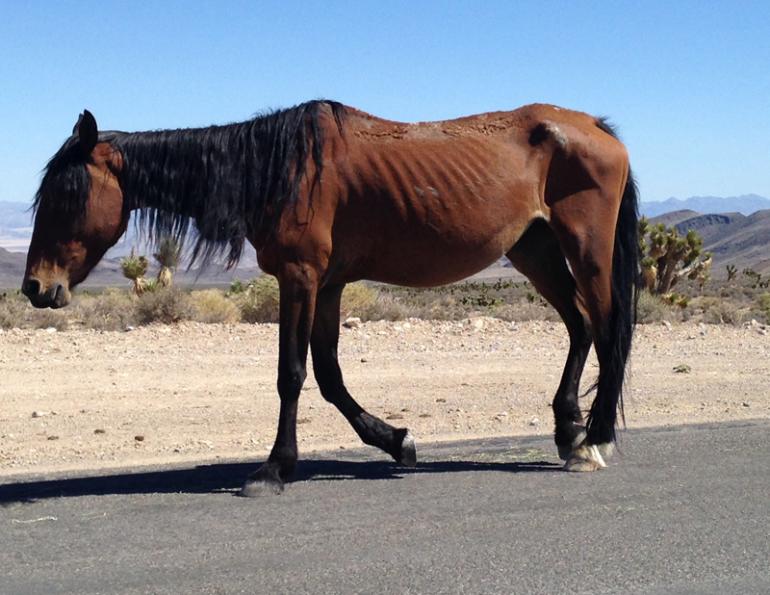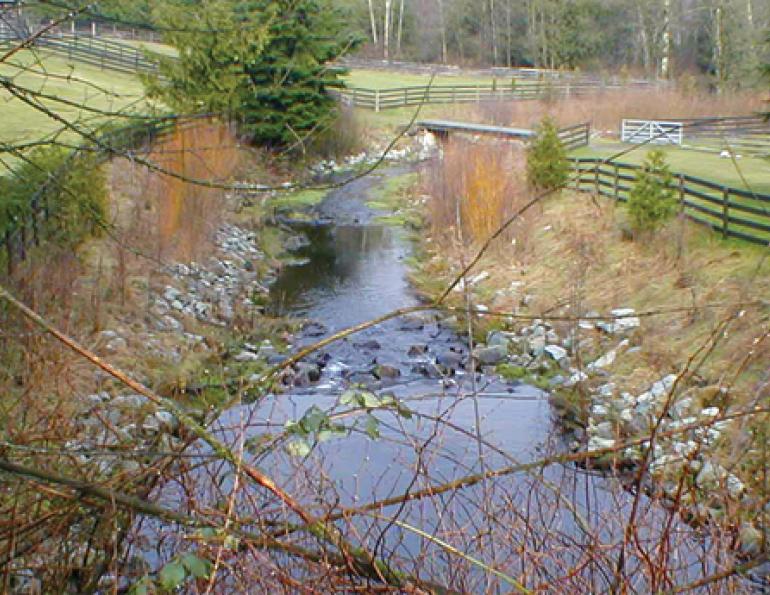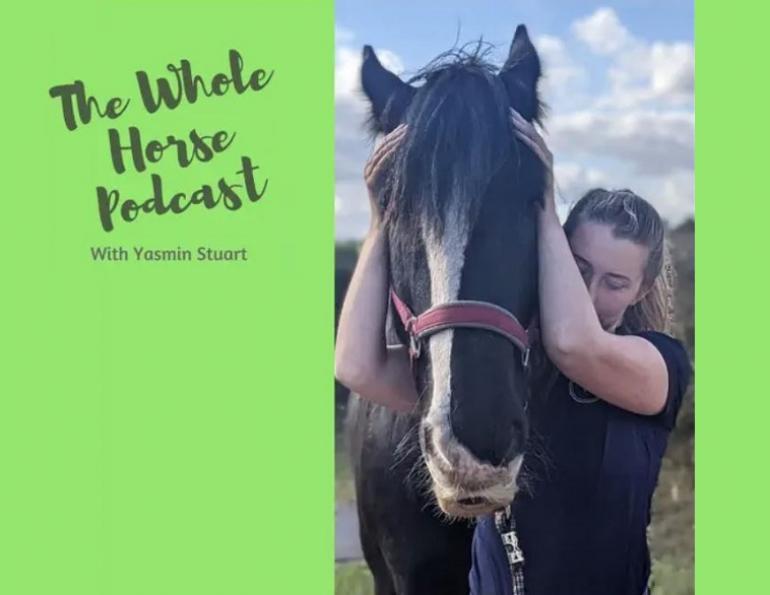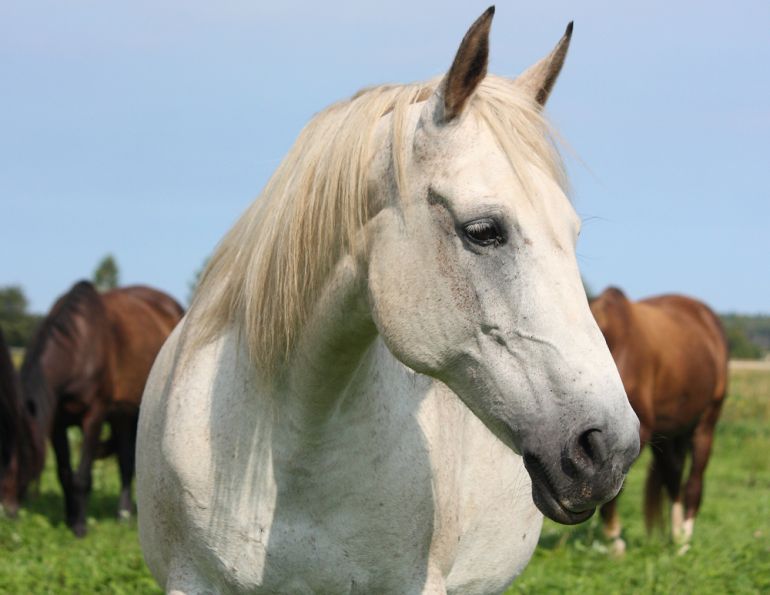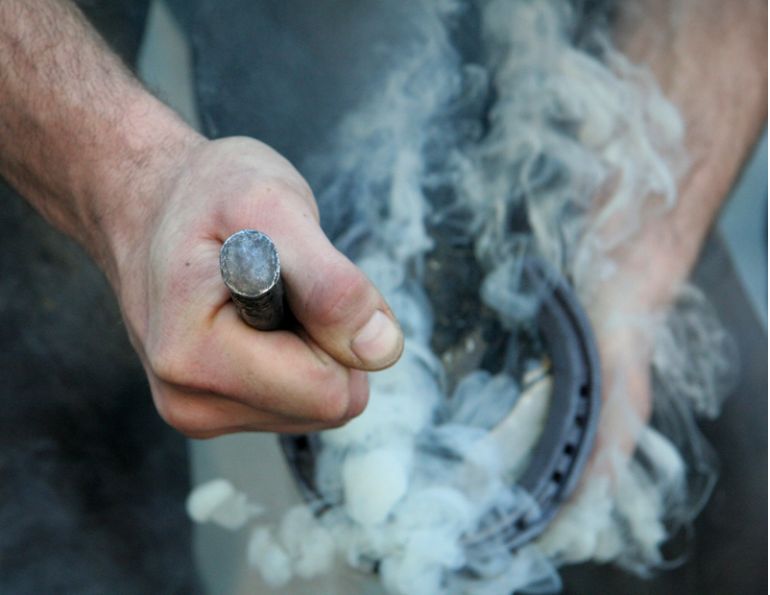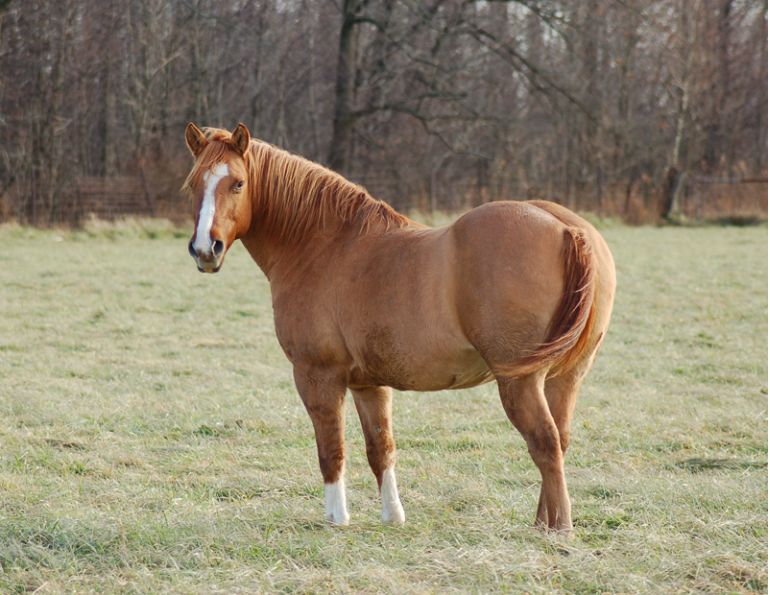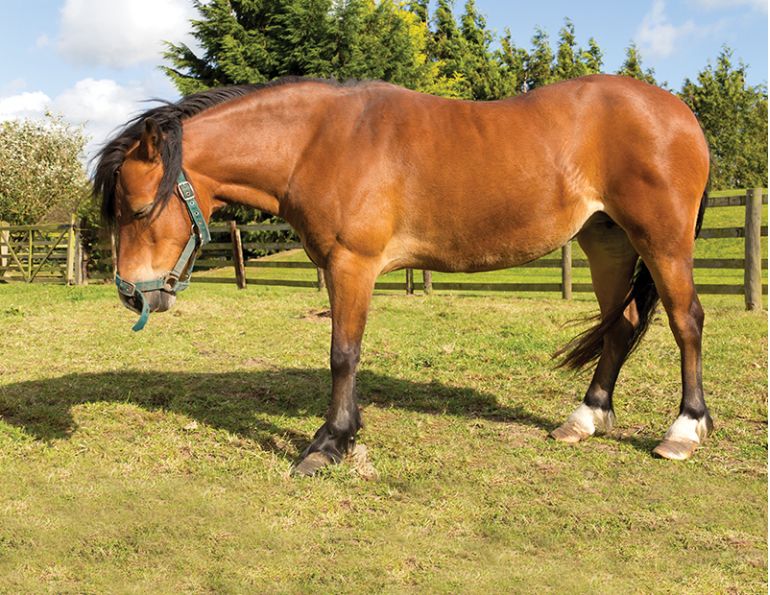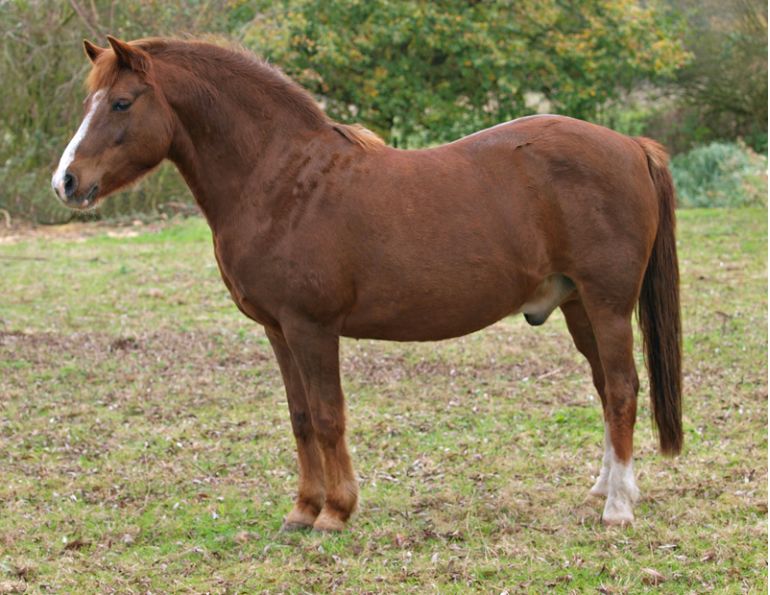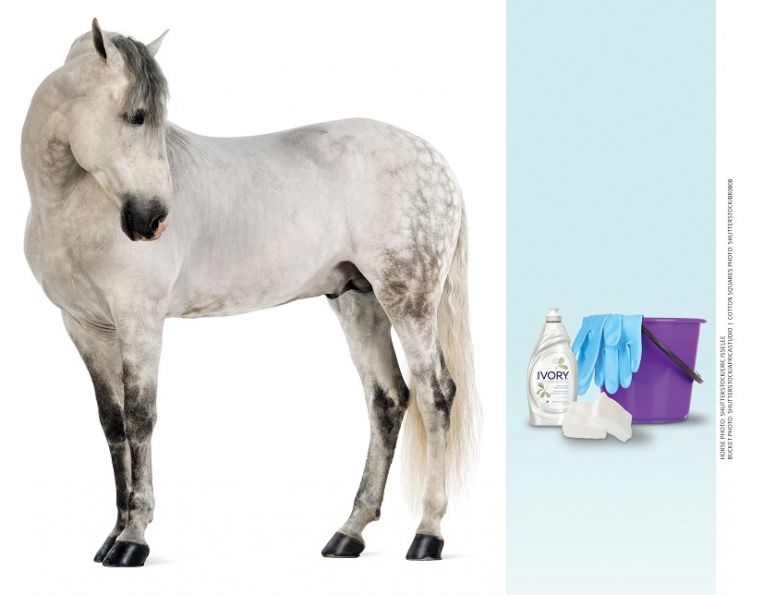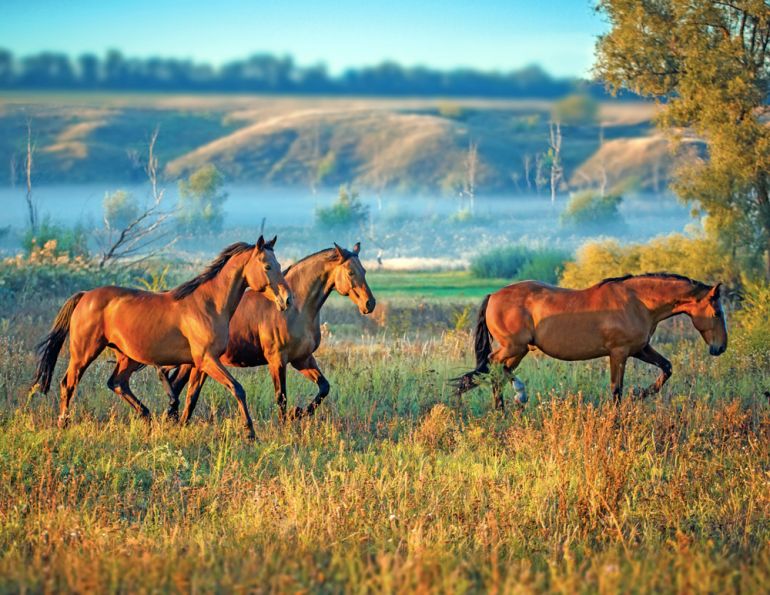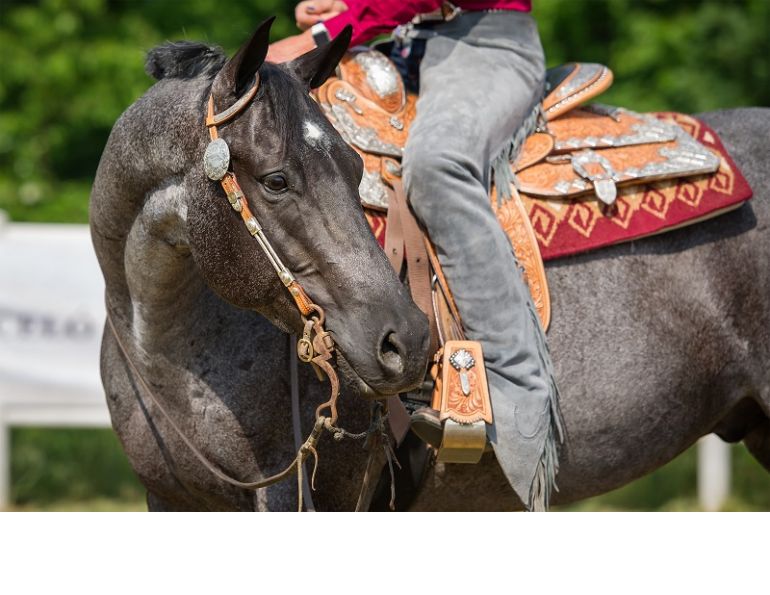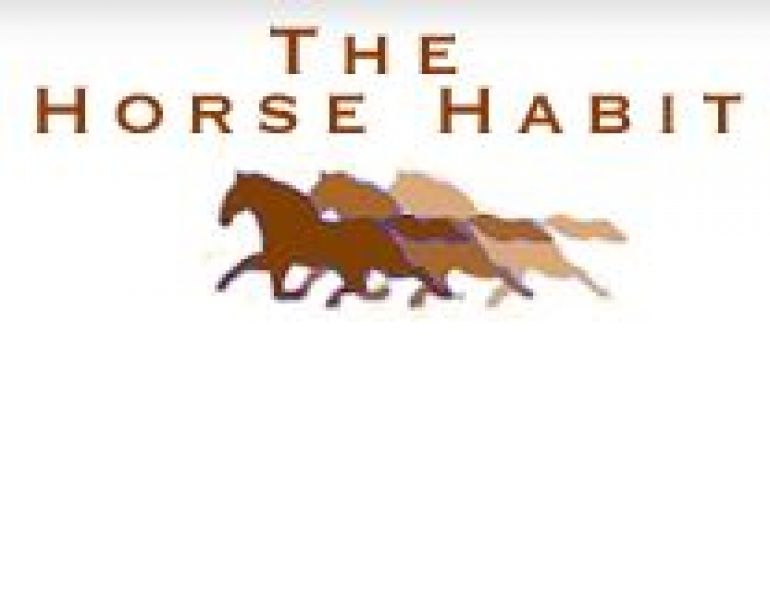By Shelagh Niblock, PAS
Horse owners are familiar with the tragic pictures shared on social media of the emaciated horse rescued by the authorities, or the one that could not be saved due to its poor condition. Malnourished horses are a reality even in our affluent Western world. Sometimes these horses are the result of well-intentioned people trying to “save” unwanted horses, only to find they are unable to do so because of cost or scarcity of feed. Sometimes the malnutrition is the result of poor teeth, advanced age, parasites, or any disease condition that affects the horse’s ability to eat or metabolize feed effectively.
Can a Severely Malnourished Horse Recover?
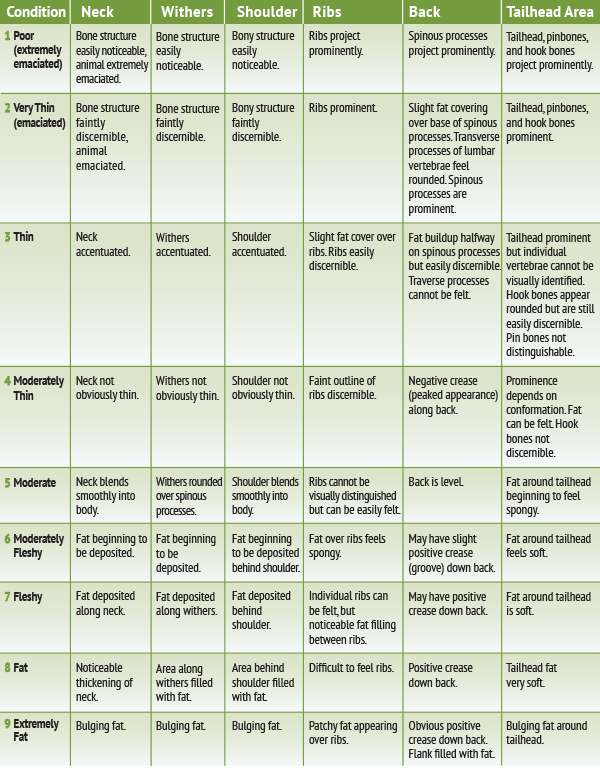
Henneke Body Condition Scoring Chart
The prognosis for the malnourished horse varies with the severity of the body weight loss and the length of time the horse has been subjected to insufficient nutrient intake. Starved horses quickly run out of body fat reserves to mobilize, and then they begin to use muscle mass for energy. This can include skeletal muscle as well as protein from the breakdown of essential organs such as the heart, liver, and kidneys. When starvation goes on for too long, the damage to muscles and body organs can become catastrophic. Horses that are allowed to lose weight sufficient to drop them down to a body condition score of two or less on the Henneke scale of 9 are far less likely to ever return to health.
In addition to acute body condition loss, starvation in the horse causes a multitude of symptoms including weakness, heart arrhythmia, and electrolyte irregularities. Starvation will exacerbate existing conditions such as arthritis or joint issues, and will reduce immune function.
Horses that are thin but also plagued with parasites, such as ticks or lice, will have a more difficult time regaining health once on a suitable feeding regime. Horses that are senior or suffering from debilitating health conditions, such as lameness or poor teeth, can be even more difficult to refeed to health.
Related: How Much Does Your Horse Weigh?
Bringing a Malnourished Horse Back to Health
The most effective way to refeed a malnourished horse is to first establish a plan that includes your veterinarian. Horses that have been subjected to prolonged nutrient deprivations could have potential physical damage to body tissues and your veterinarian will need to assess the animal before a refeeding program is initiated.
An assessment of current body weight and desired body weight is necessary, as is an estimation of current body condition. A weight scale for this kind of workup is the best, but a weight tape can also be used. Equine weight tapes are available at most stores that supply equine feed. When weight taping an emaciated horse, don’t be surprised if the tape suggests that the horse is heavier than expected. Weight tapes are best used for horses that are in “average” body condition and are not always accurate for the emaciated horse. Despite that, the use of one as part of your initial plan can be helpful in giving you a “baseline” weight measurement to use going forward. Pictures taken at the initiation of the refeeding program and at regular intervals during the course of treatment can be invaluable when assessing the progress of the horse.
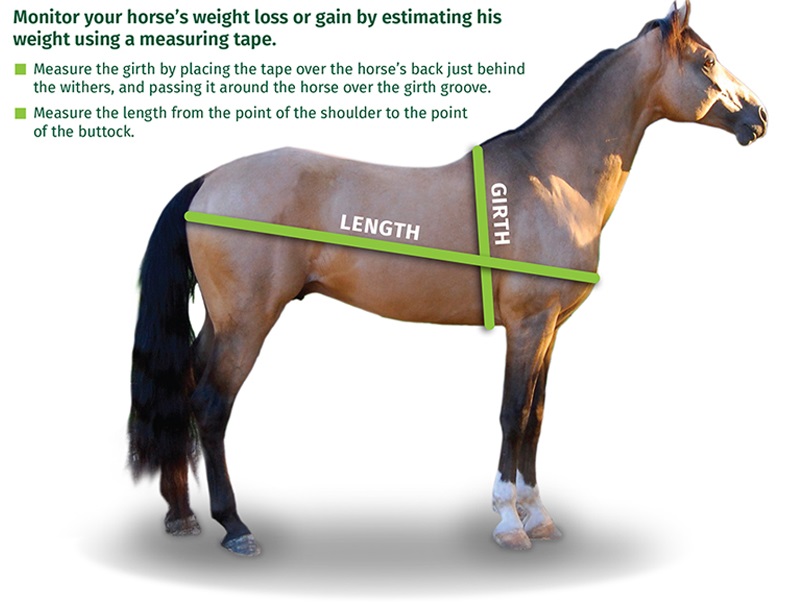
Do not undertake deworming or dental work on the horse at this point. Ask your veterinarian when it is safe to subject the horse to these kinds of stresses. Your goal must be to determine how badly the horse has been affected by starvation and how best to reintroduce food. As always with any horse, healthy or not, small meals fed often is the maxim for good horse health, and is of critical importance in refeeding the malnourished horse.
Often starved horses are dehydrated and will need prompt attention to water intake. If the horse is clearly dehydrated but will not readily drink adequate water, discuss options for rehydration with your veterinarian.
What is Refeeding Syndrome?
Refeeding syndrome is the term used to describe a metabolic condition affecting horses that are reintroduced to high-nutrient feeds too quickly after enduring starvation for extended periods of time. Starved horses that have lost in excess of 50 percent of their normal body weight are in acute danger of suffering from refeeding syndrome if they are not re-introduced to feed very slowly and carefully.
Offering a starving horse unlimited quantities of high quality feed is tempting but not advisable. When a starving horse is offered large amounts of feed, the digestible carbohydrates are readily broken down to glucose in the stomach and small intestine. When absorbed into the blood stream, glucose initiates a cascade of metabolic responses that the starved horse is unable to adequately regulate. The outcome is frequently a severe disturbance in the electrolyte balance of the horse, resulting in loss of muscle function and strength, erratic heart rate, shock, and frequently, death.
Starved horses can also have disrupted populations of hind gut microbial populations. Introducing large amounts of readily fermentable carbohydrates into this compromised environment can also have catastrophic health effects for the starved horse.
What Should the Horse be Fed?
The safest and most effective way to initiate the safe refeeding of the malnourished horse is to offer it multiple small feeds per day of a good quality alfalfa or grass-alfalfa mix hay. Alfalfa hay delivers a safe source of protein and hind gut-friendly fibre for energy. The goal should be to offer meals of about one to one-and-a-half pounds of hay at intervals of three to four hours for the first few days. Avoid concentrates like grain initially. Starved horses often have compromised endocrine function and so may not cope well with the blood glucose and insulin swings generated by starch and sugar. Don’t worry about including mineral supplements until after at least the first ten days of refeeding the horse. A salt block can be offered free choice along with free-choice water. It is advisable to offer water in a bucket rather than automatic waterers initially to allow intake to be monitored.

If starvation continues for too long, the damage to muscles and essential organs will be catastrophic. Photo: Flickr
When the horse is progressing satisfactorily on this regime for three to five days, then it is safe to increase meal size and reduce the number of meals being fed. Horses that successfully make it to ten days on a feeding regime like this are at much less risk of developing refeeding syndrome. After ten days, it is safe to introduce small amounts of low non-structural carbohydrate (NSC) complete feeds, again keeping the meal sizes very small. Any manufactured feeds introduced should complement the hay intake of the horse, not replace it. Most horses who have been in a refeeding program for at least ten days can safely eat about one-half a pound of commercial complete feed, fed twice a day. This can be increased gradually as needed.
Once you get the horse past the risk of refeeding syndrome, it may be advisable to consult with your veterinarian or an equine nutritionist about a more targeted plan for safe weight gain. If the malnourished horse is destined for performance or breeding, you may want to have a better estimation as to how long the progression back to healthy body weight might take, and the nutritional plan needed to achieve it.
Related: Feeding Horses with Special Nutritional Needs
Should the Horse Have Pasture?
The safe use of pasture for the malnourished horse will depend on the condition of the horse to begin with. Horses that are severely malnourished should be kept on stall rest with a feeding program of hay as already described. Horses who are not as severely malnourished can be allowed short periods of grazing under good weather conditions after they have demonstrated that they can handle walking around and foraging for themselves.

If this emaciated horse survives initial refeeding, it may take up to a year before he returns to a healthy body weight. Photo: iStock/Arghman
Pasture can vary widely in quality and so be cautious in expecting a horse recovering from starvation to fend for himself in a pasture situation. Grazing should allow the horse to consume sufficient digestible energy from forage to assist in body weight gain. If he has to walk for three hours in order to find a small amount of grass, you will have done him no favour by pasturing. The malnourished horse should not be put out in a group situation until he is strong enough to fend for himself against other possibly more aggressive horses. Limit grazing for the malnourished horse to two or three hours at the most initially, and as with any horse, be very careful of grazing when spring pastures are at their most productive.
Horses with Poor Teeth or Other Health Issues
Horses with poor teeth, parasites, or other medical conditions may not be able to eat hay easily and so a good choice for them is frequent small meals of soaked alfalfa cubes or pellets. After the first week of refeeding, horses with poor teeth can be offered small meals of low NSC complete feed in addition to forage meals. Ideally, these should be in a form where they can be soaked or softened for easier consumption. Avoid soaked beet pulp and/or soy hulls for the first seven to ten days until the horse is more metabolically stable and gaining strength and body weight.
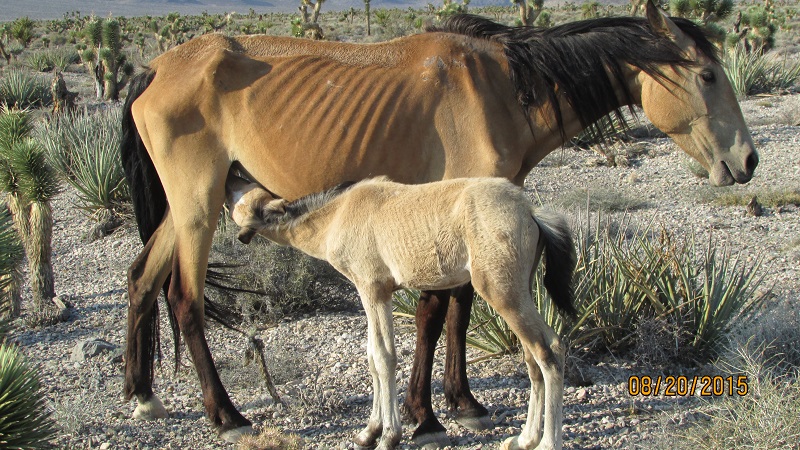
If caring for a malnourished lactating mare, the foal should be weaned as soon as it is safe to do so. Photo: Flickr
Related: Feeding the Growing Horse for Health and Performance
Should Fat or Oil be Fed?
Although fat has about 2.25 times the calories of carbohydrates, you should avoid feeding high fat feeds or oil for at least two weeks after initiating the refeeding program. Fat is digested and absorbed in the small intestine of the horse, and fat that escapes digestion in the foregut will negatively affect hind gut function. Severely malnourished horses can have problems digesting fat. Feeding high fat feeds too soon after initiating your refeeding program can reduce appetite.
Remember that while oil provides calories to horses it does not provide protein, which is one of the more important nutrients in a refeeding program for a malnourished horse. Protein is the nutrient that will help the horse rebuild muscle. If you are going to supplement fat for calories, it is useful to consider feeding a high fat concentrate like flax, rice bran, or a high fat manufactured feed. Remember as well that if you are feeding the horse supplemental fat, it MUST be fed in very small meals. Keep the inclusion of ground flax or rice bran to no more than one-half a cup per feeding, with a maximum intake of not more than one or two cups per day depending on the progress of the horse. Feed manufactured high fat concentrates according to the manufacturer’s directions. If you are going to feed supplemental fat to the malnourished horse it may be wise to discuss it with a veterinarian or equine nutritionist first.
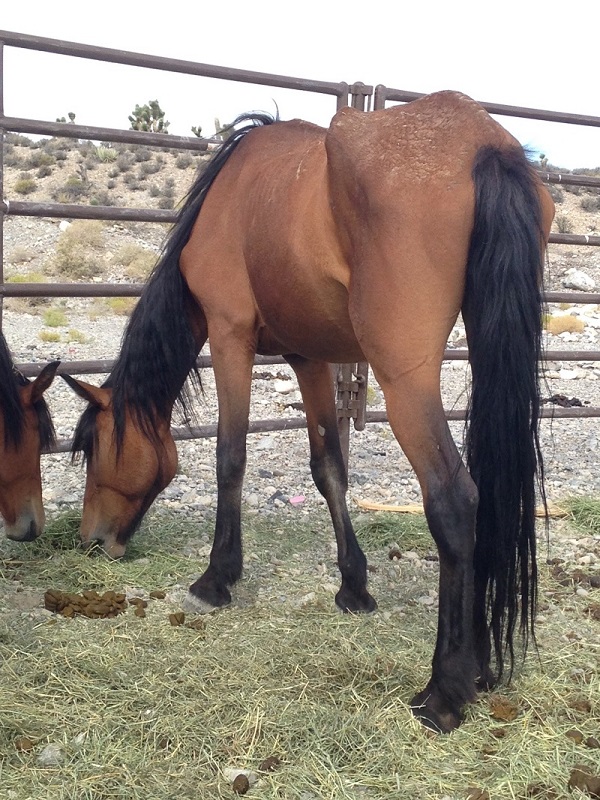
Give small feeds of quality alfalfa or grass-alfalfa mix hay every three to four hours for the first few days, along with a salt block and free-choice water. Photo: Flickr
Refeeding Pregnant or Lactating Mares
The protocol for refeeding the starved pregnant or lactating mare is the same as for feeding any horse, but consideration must be given to the extra nutrients the mare will need for lactation or gestation. If the mare is lactating, it is advisable to wean the foal as soon as it is safe to do so. When refeeding a malnourished pregnant mare you are providing nutrients and energy for her foal in utero as well, and so consideration when calculating nutrient requirements must be made. The most important considerations for the mare are to initiate a feeding program where you can minimize stress for her and encourage slow but healthy weight gain.
Timeline to Return to Work or Breeding
The time it takes to bring a horse back to a healthy body weight after being malnourished will depend on the severity of the body weight loss and the length of time it was allowed to persist. It can take as little as two or three months or as long as ten to twelve months. Most horses that survive the initial refeeding will go on to be healthy and productive, but some malnourished horses may never be able to get back to their previous health. Long term damage to heart, muscle, and endocrine function can change the expectations for the horse. Once the horse is back to a healthy body weight, it is advisable to consult with your veterinarian about the prognosis for the horse to go back to work, especially if it is a performance horse or breeding stallion or broodmare. Bring the horse back to work gradually, paying particular attention to slow but consistent improvements in strength and cardiovascular fitness.
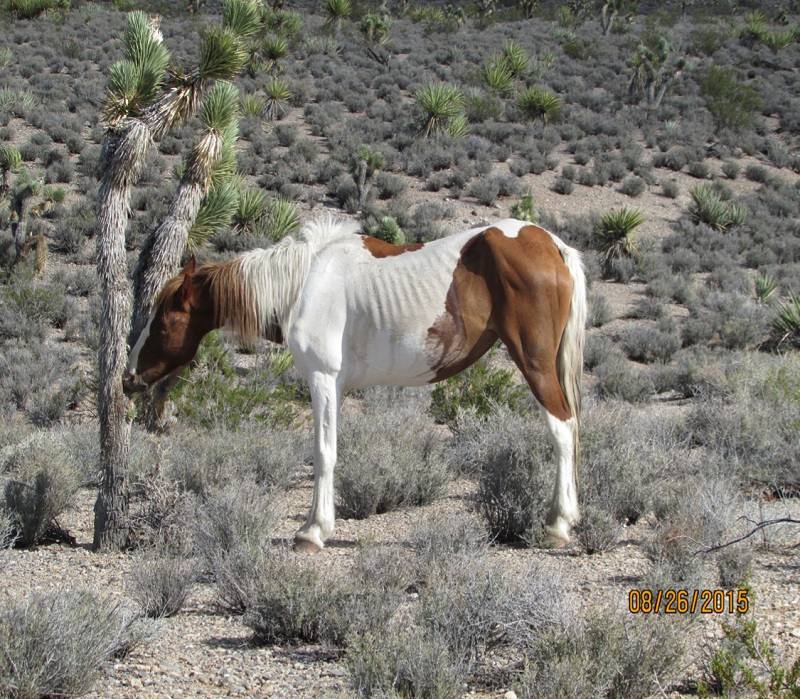
Due to extreme drought conditions in southern Nevada in late August 2015, about 200 of the area’s wild horses were gathered up by the Bureau of Land Management, assessed by a veterinarian, and given access to hay and water. Most were given a body score of 3 or less. This wild horse was observed browsing on the bark of a Joshua tree and other desert shrub, which provide no nutritional value. Photo: Flickr
Harsh Western Canadian winters and summers beset with drought conditions and rampant wild fires that consume harvestable feed won’t help to reduce the numbers of severely malnourished horses. If you are faced with the prospect of refeeding a malnourished horse, remember that slow, steady weight gain is the goal. Don’t be discouraged when at times the horse seems to stop gaining weight. Expect some issues like occasional mild diarrhea and possibly picky feeding behaviour. Consistency and the minimization of stress are key to a successful refeeding protocol. And remember to always consult with your veterinarian quickly, especially in the first week if the horse goes down and can’t get up, shows unusual aggression, or any neurological problems.
Related: Nutrition Requirements of Horses
Related: The How and Why of Soaking Hay
Main article photo: Flickr



